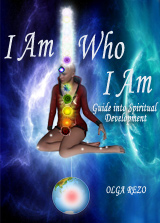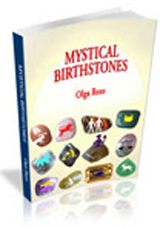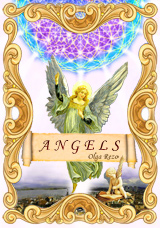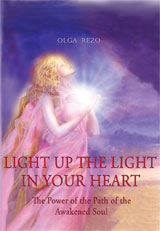
Kabbalah - Introduction
The knowledge of Kabbalah is mighty. Throughout centuries esotherists from various backgrounds, inspired by the Jewish Kabbalah, created their own mystical Kabbalah systems. The oldest and most ancient Kabbalah manuscript is Sefer Yetzirah – Book of Formation. It is believed that Jewish Mysticism has its origin in the biblical times of Abraham, and that the knowledge of Sefer Jetsirah has been conveyed orally from one generation to the other.
Rabbi Akiba in the 10th century brought into light a short booklet – the first written version of Sefer Yetzirah, the Book of Formation. It describes the basic structure of Kabbalah, i.e., the creation of our Universe through 22 hidden paths (22 letters of Hebrew aleph-beth) and 10 Sephirots.
In France, in the 11th century appeared Bahir – the Book of Illumination. Somewhat latter in Spain appeared Zohar – the Book of Splendor, another important Kabbalah document. The exodus of Jews from Spain in 1492 helped spread the classical Kabbalah throughout Europe. Aaron Ben Samuel created the German Kabbalah, which is rooted in the Merkabah mysticism, with emphasis on magical rituals.
At large, the western Kabbalah is actually Christian Kabbalah, with add-ons like alchemy, tarot, magical rituals, astrology, numerology (notaricon, temurah), etc. The possibility of complementing Kabbalah by introducing new aspects is easy and unlimited. What is common to all variations of Kabbalah is the strong desire for a mystical experience of reunification with God. Meditation, prayer, prayer for others, mantra, fasting, and proper conduct is a way of achieving this goal.
Kabbalah is a key to controlling the subtle powers in achieving genuine mystical experience of Oneness. The transcendental experience lies beyond the borders of the rational and even the irrational mind. The Divine experience lies even further on the scale of spiritual accomplishments. To convey your own experience to somebody is hardly possible. It could only be done by Divine means of communication, which lie above and beyond the Tree of Life. This is the reason why the higher Sephirots are so vaguely comprehensible.
The Tree of Life is expressed through Sephirots into 4 worlds:
Atzilut – archetypal, Divine world, world of emanations, level of radiation
Beriah – creative world, world of Archangels, level of creation
Yetzirah – formative world, world of Angels, level of shaping
Asiyah – manifested world, world of chakras and nadis, physical level
Beyond Keter in the world of Atzilut are three veils of negative existence: nothing, limitless nothing, and limitless light. These veils contain and conceal the unmanifested aspects of the Sephirots, the ones that human mind can hardly comprehend. Keter is created by contraction of the limitless light. It is the first perceivable point of manifestation. In spite of that, both Atzilut and Beriah are on the far side of human understanding. Their structure can only be hinted through the expression of the Sephirots in the lower worlds. Yetzirah and Asiyah, on the other hand, are somewhat closer to our understanding.
The Tree of Life depicts the descent of the Divine into the manifested world. It contains three Pillars upon which the 10 Sephirots are distributed. The left side of the Tree – which corresponds to the Pillar of Severity – is related to the left side of the brain (Pingala). The right side of the Tree – which corresponds to the Pillar of Mercy – prefers the right side of the brain (Ida). Our spinal cord corresponds to the Middle Pillar on the Tree of Life, which is Pillar of Balance (Sushumna).
The Tree of Life is more spiritual in its upper parts.
The 22 Paths on the Tree of Life contain the 22 Letters of the Hebrew aleph-beth and interconnect the 10 Sephirots. Each Sephirot has its own number.
Sephirot No. 1, Keter is Thought,
Sephirot No. 2, Chokhmah is Wisdom,
Sephirot No. 3, Binah is Understanding,
Sephirot No. 4, Chesed is Mercy,
Sephirot No. 5, Gevurah in Power,
Sephirot No. 6, Tifereth is Glory,
Sephirot No. 7, Netzach is Victory,
Sephirot No. 8, Hod is Identifying with God,
Sephirot No. 9, Yesod is Foundation, and
Sephirot No. 10, Malkuth is Kingdom.
The Sephirot Daat – Knowledge, has no number and is situated in the gap between Chokhmah – Binah, and Chesed – Gevurah.
Each Path connects two Sephirots.
The Paths on the Tree of Life represent our movement from one state or condition to another. They are our subjective experiences.
In Kabbalah special emphasis is put on Paths that correspond to so called Mother letters. These Paths are positioned horizontally on the Tree of Life.
SHIN connects Chokhmah and Binah, it is a Plane of Fire and corresponds to the Right Pillar – head. This Plane governs the celestial world, which includes the constellation of planets and stars.
ALEPH connects Chesed and Gevurah, it is a Plane of Air, and corresponds to the Central Pillar – lungs. The Plane of Air controls the rain.
MEM connects Netzach and Hod, it is a Plane of Water, and corresponds to the Left Pillar – abdomen. The Plane of Water is the source of the regular sequence of the seasons. As the Earth revolves around the Sun, the waters of the Earth change appropriately.
To each of the Paths a single Major Arcana (a key or mystery) is connected. The Arcanas represent the Cosmic Elements, and each of the Arcanas is a small Universe for itself. To understand the Arcanas properly, a mental ability of simultaneous differentiation and identification of seemingly inconsistent concepts is needed. This inconsistency exists only in the mind of the observer. Once this is understood, there comes the possibility of initiation.
The true meaning of the Tarot Cards is revealing the Universe. Each Tarot Card is a key to the invisible world. There are 78 Cards in total: 22 Major Arcana – constituting parts of the Tree of Life, 40 Minor Arcana – representing the four elements distributed in the ten Sephirots, and 16 Court Cards which as well belong to the Sephirots.
The Sephirot, Emanation or Sphere, is a Symbol of an objective state. The Sephiriot is a number. A number is a primitive forms of an Archetype. It is a mediator between people and higher worlds. A number is an alias for a secret law. Symbols are technical help, intuitive ideas, they transform the psychical energy from lesser to greater forms.
We know that the logic of the ego-consciousness does not reach the sub-conscious mind. A symbolic image could be composed of known elements, but behind the whole there can be something hidden, something that cannot be interpreted. That something is of opposite meaning. It is a secret. The unconsciouss part of our personality understands symbols. By using symbols we can express hardly apprehensible unconscious material.
The symbolic process is unconscious. It is perceived in images, i.e., the messages are received in form of images. Without symbols we cannot get in touch with our unconscious. Therefore, it can be stated that the symbol is a middle way on which the opposites merge to enable new motion.
Related Texts:
What is the Meaning of Kabbalah
The Kabbalistic Meaning of the Major Arcana
Comments:
Michelle says:
10-23-2016
A lowing inspiration. Thank u for the knowledge and empowerment.
sunnyray says:
10-24-2016
Thanks, Michelle, I really appreciate your feedback. Many blessings!



















